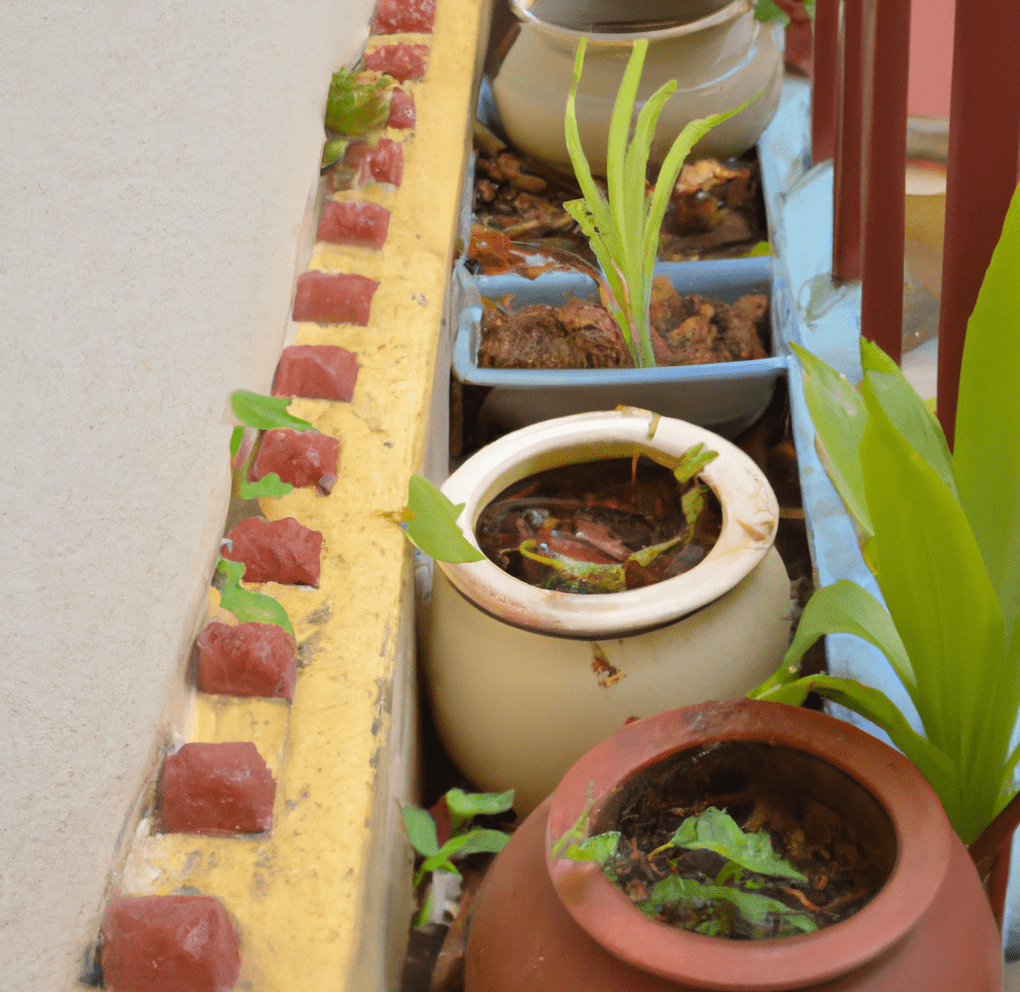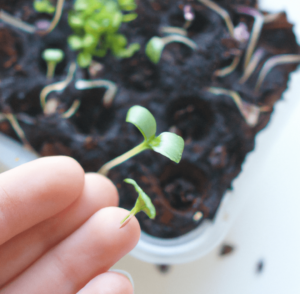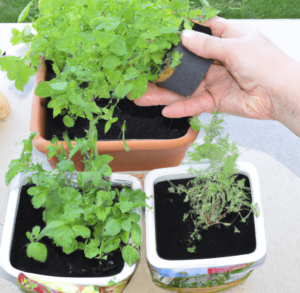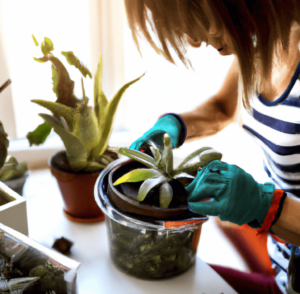A lot of people think that gardening in small spaces is impossible but just like gardening in extreme climates, growing plants, flowers, herbs, and vegetables in a small space is very possible. Many individuals are choosing tiny space gardening as an urbanization-related way to add a little bit of nature to their houses. Here’s what you need to know
Planning and Preparation
Planning and preparation are essential when gardening in small spaces. Starting a tiny space garden requires:
- Selecting the ideal place and taking into account the area’s exposure to sunlight, water, and wind.
- Preparing the ground by getting rid of any weeds, pebbles, and garbage after choosing the place.
- Selecting the best plants for the area based on their needs for growth and the quantity of light and water they require.

Choosing the Right Location for Your Small Space Garden
No matter what gardening guide you’re using so that you’ll succeed in gardening in small spaces, you need to think about the location:
- The area should have enough space for the plants you have picked to flourish and receive enough sunshine.
- Take into account elements like the region’s exposure to wind, water, and sunlight. For instance, although some plants enjoy some shade, others need full sunlight.
- Think about the local soil type as well as the area’s surroundings, including nearby structures and trees.
Selecting the Right Containers, Materials, and Tools for Creating a Small Space Garden
For a successful garden while planting in a small area, the appropriate containers, materials, and tools must be chosen. When gardening in small spaces:
- Containers are available in a wide range of forms, dimensions, and materials, including clay, plastic, and wood.
- Pick containers that will fit in the limited area you have and are appropriate for the plants you wish to grow.
- Think about the kind of soil and fertilizer you’ll use, as well as the kind of irrigation system you want, such as an automatic irrigation system, a hose, or a watering can.
- To maintain and care for your garden and keep it healthy, it’s also critical to have the appropriate tools on hand, such as pruning shears, a spade, and a hoe.
Having the appropriate containers, supplies, and tools can help assure the success of your tiny space garden, whether you are growing flowers, herbs, or veggies.
Preparing the Soil and Choosing the Right Fertilizers
When gardening in small spaces, you need to prepare the soil and choose the best fertilizers:
- To enable plant roots to expand and efficiently absorb water and nutrients, the soil in your small space garden has to be loose and well-drained.
- Remove any weeds, rocks, or other debris from the soil before adding organic material, like compost or well-rotted manure.
- Fertilizers can be found in a variety of forms, including liquid, granular, and slow-release, so it’s crucial to pick the one that best suits the plants you’re cultivating and their specific needs.
Planting and Care
The final phases in gardening in small spaces are planting and maintenance:
- Select plants that will thrive in the given light and space, and plant them at the proper depth and distance apart to give them room to expand and mature.
- To make sure your plants receive the nutrients they need to flourish and produce healthy crops, water them frequently and give them enough sunshine.
- Pruning and weeding your garden on a regular basis will keep it healthy and flourishing.
Whether you’re producing flowers, herbs, or veggies, planting and caring for your garden are crucial stages to make sure it yields lovely and ample harvests.
How to Plant and Care for Specific Plants That Are Suitable for Small Space Gardening Such As Succulents, Herbs, Vegetables, and Small Fruits
Knowing how to grow and care for particular plants, such as succulents, herbs, veggies, and small fruits, is crucial for gardening in small spaces. Understanding the specific growing requirements of each species of plant is essential to avoiding issues and ensuring a robust and healthy yield. For instance, herbs need good soil and sufficient light to develop, whereas succulents need well-draining soil and just occasional watering. The right spacing and the appropriate amounts of sunlight, water, and nutrients are among the requirements for vegetables and small fruits, among others.
Research the precise growing requirements of the plants you want to grow and make plans appropriately for the best results. This will assist you in avoiding issues and guarantee that your small garden yields a fruitful and plentiful product. You may create a flourishing tiny space garden full of attractive and useful plants with the appropriate knowledge and care.

Tips for Watering, Fertilizing, and Pruning
When gardening in small spaces after learning about vertical gardening for beginners or container gardening, here are our top care tips:
- Watering: Regular watering is necessary for gardening in tiny spaces, but it’s crucial to avoid overwatering the soil, which could lead to root rot. Deeply water your plants, but do not water them too frequently. Also, make sure to give the soil time to drain in between waterings.
- Fertilizing: Fertilize at the proper time and with the proper sort of fertilizer to make sure your plants receive the nutrients they require to thrive and produce healthy crops. Avoid over-fertilizing, which can harm your plants, and follow the recommendations for the particular plants you are growing.
- Pruning: Pruning is a crucial step in small-space gardening since it maintains the health of your plants, encourages the growth of new growth, and gets rid of any dead or diseased growth. Regular pruning is important, but avoid over-pruning at all costs to avoid stressing and harming your plants.
Whether you’re planting flowers, herbs, or veggies in your tiny space garden, you’ll be able to maintain it flourishing for years to come with the help of these ideas.
Types of Small Space Gardens
Small space gardens come in a wide variety of styles, each with special benefits. There are various ways to maximize your limited area, whether you’re growing food in containers on your balcony, setting up a raised bed garden in your backyard, or employing vertical gardening methods.
Select the ideal kind of small space garden for your requirements after thinking about the plants you want to cultivate and your garden’s objectives. When it comes to tiny space gardening, the options are numerous, ranging from ornamental gardens with lovely flowers to food gardens stocked with fruits, veggies, and herbs.
The Different Types of Small Space Gardens, Such As Container Gardens, Window Gardens, and Hanging Gardens
Gardening in constrained spaces, such as balconies, windowsills, or little ground space is all included in gardening in small spaces. These kinds of gardens have several advantages, including the ability to cultivate your own fresh flowers, veggies, and herbs:
- Container Gardens: Container gardens are areas where plants are grown in pots or containers that are placed on patios, balconies, or other small patches of land. Container gardens give gardeners choices in terms of selecting plants that match the space at hand and provide chances to cultivate a range of plants.
- Window Gardens: Window gardens are those that are cultivated on windowsills in pots or other containers. If you want to grow plants but only have a small amount of ground area, this style of garden is ideal for you. Additionally, window gardens give you the chance to cultivate plants like succulents and herbs that need a lot of light.
- Handing gardens: Small gardens that are draped from walls or balconies are known as hanging gardens. For individuals who prefer to grow plants vertically, hanging gardens are a terrific option. They are ideal for growing trailing plants like ivies and ferns.
Tips for Creating and Maintaining Different Types of Small Space Gardens
Gardening in small spaces can be successful no matter what type of garden you choose:
- Container Gardens: It’s critical to select pots with adequate drainage and the correct size for your plants when planting a container garden. Use potting soil of the highest quality and select plants that will thrive in the amount of light that your balcony or patio receives.
- Window Gardens: It’s crucial to pick the appropriate plants for your windowsill while creating a window garden. Choose plants that are suitable for the amount of light coming through your window, taking that amount into consideration. Make sure to give your plants the right nutrients and regular watering.
- Hanging Gardens: Pick a spot that is shielded from wind and precipitation when setting up a hanging garden. Use drainage-friendly pots, and choose plants that are adapted to growing in a hanging posture. For healthy hanging gardens to be maintained, regular watering and fertilizer are essential.
Bottom Line: Gardening in Small Spaces
Regardless of the size of your yard, gardening in small spaces gives you a little bit of nature no matter where you live. Whether you select container gardens, window gardens, or hanging gardens, tiny space gardening has many advantages, including the ability to grow your own fresh herbs, veggies, and flowers. The secret to success is to pick plants that will thrive in your growing environment and to take good care of them, which includes frequent watering and feeding.
FAQs on Gardening in Small Spaces
What is gardening in small spaces?
Growing plants in constrained spaces like balconies, terraces, or tiny plots of ground are referred to as “gardening in small spaces.” Gardening may be a useful and fun activity that brings a little bit of nature into urban environments, despite the restricted space.
What advantages can small-space gardening techniques offer?
There are several advantages to gardening in small areas, including aesthetic appeal and the availability of fresh fruits, vegetables, and herbs. Additionally, it can enhance air quality, give a feeling of accomplishment, and promote relaxation.
What factors should I take into account when setting up a small space garden?
When setting up and planning a tiny space garden, you should think about how much sunlight, wind, and water the area will receive. Additionally, it’s crucial to prepare the soil, choose suitable nutrients, and choose the right plants, containers, materials, and tools.
What factors should I consider when deciding where to put my garden in a small space?
When deciding where to place a tiny space garden, take into account the area’s exposure to wind and water, the type of soil, as well as any surrounding buildings or trees.
What factors should I take into account when choosing containers, supplies, and equipment for my small space garden?
You should think about the size of the area, the plants you want to grow, the type of soil and fertilizer you will use, and the sort of irrigation system you want to use when choosing containers, materials, and tools for a small space garden. A hoe, a spade, and pruning shears are just examples of the tools you’ll need for maintaining and caring for your garden.
How can I get my tiny area garden ready for planting and pick the best fertilizers?
You should remove any weeds, rocks, or other debris from the soil before adding organic material, such as compost or well-rotted manure. Consider the particular requirements of the plants you are cultivating when choosing fertilizers, and choose a liquid, granular, or slow-release fertilizer that best satisfies those requirements.
What are the procedures for planting and maintaining a garden in a small area?
Choosing the right plants, planting them at the right depth and distance between them, watering them frequently, and pruning and weeding frequently are all phases in planting and maintaining a small space garden. To avoid problems and guarantee a good output, it’s crucial to understand the particular growing requirements of each species of plant, including succulents, herbs, vegetables, and small fruits.
What should I know about fertilizing, trimming, and watering my garden in a tiny space?
It’s vital to avoid overwatering your tiny space garden, as this might cause root rot. Water your plants thoroughly but infrequently. When fertilizing, take into account the unique requirements of your plants and choose the fertilizer that best satisfies those requirements. For your garden to remain healthy and flourish, regular pruning and weeding are crucial.







